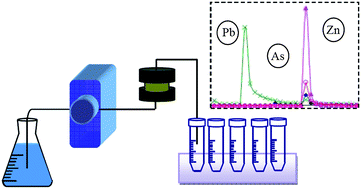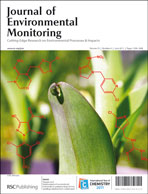This study investigates the stabilization of As in the contaminated sludge after treatment with MnO2 or Ca(OH)2, and the influence of the stabilizing materials on the leachability of the co-existing elements Pb and Zn. By exploiting a continuous-flow assembly facilitating a modified Wenzel's sequential extraction scheme (designed for the fractionation of arsenic), it is possible to ascertain the leachability, mobility and fractional alteration of these elements under stimulated natural (flow-through) leaching conditions. The fractionation data show that more than 80% of As, Pb and Zn in the untreated sludge are bound in the amorphous Fe oxides fraction and residual fraction. The addition of MnO2 has only an insignificant effect on As fractional transformation, while Ca(OH)2 caused an increase in As mobility. For Pb, the decrease in leachability was clearly visible. The extractable Pb was reduced by 18% and 40% in stabilized MnO2 and Ca(OH)2 sludge samples, respectively. Unlike that of Pb, the mobility of Zn was not affected by the additives used. Their fractional distribution patterns before and after the stabilization process remained the same. The ability to produce detailed leaching profiles for As and other elements (Pb, Zn, Ca, Mn and Fe) meant that elemental associations in individual fractions could be examined. From the MnO2-treated sludge, the coincidence of the As, Pb, Zn, Fe, and Mn peaks seems to indicate a close association of these elements in the Fe-oxides-bound fraction. Furthermore, the leaching profiles may be used as evidence of a strong affinity between these elements and added MnO2.


 Please wait while we load your content...
Please wait while we load your content...